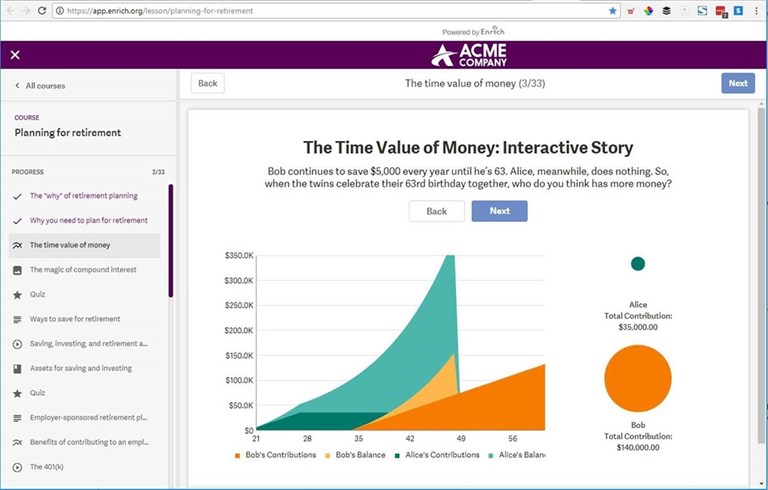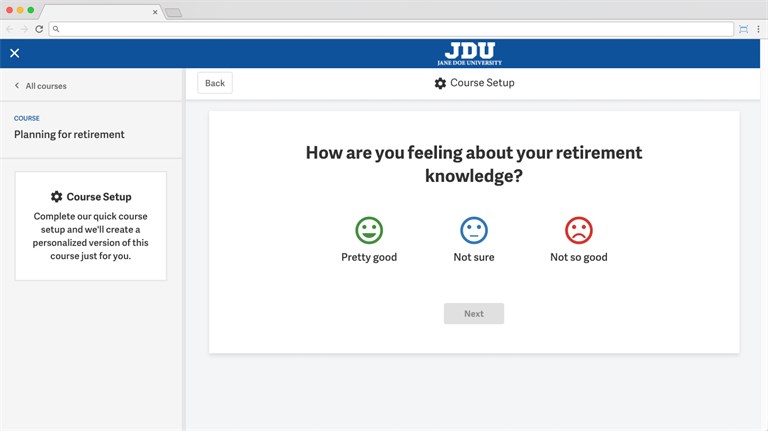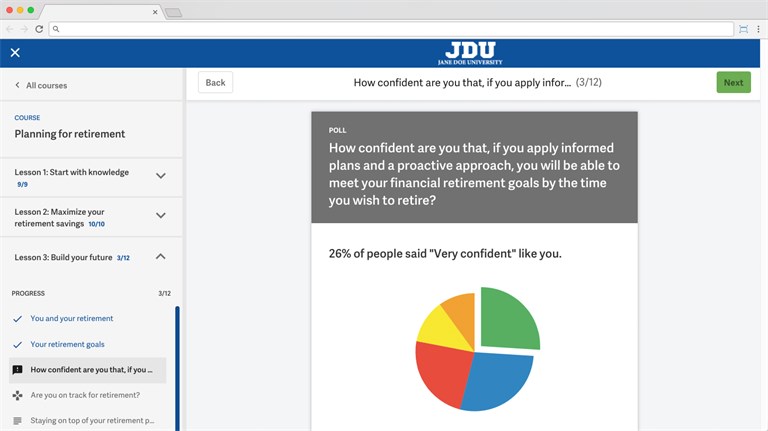It's never too early to start saving for retirement - but try telling that to a group of college students.
In fact, for many educators, it may seem like a strange idea to broach retirement to college students. They are, after all, just getting started.
However, as with all things, it's better to have a rounded education than not, especially when it comes to financial understanding.
Few high schools require financial literacy classes. An assumption that college students know where, when, and how to properly save for retirement is deeply flawed.
Colleges and universities can equip their students with crucial information they are currently lacking.
Retirement is Saving
The choices college students make have a lifelong effect on their finances.
Making responsible, forward-thinking choices now will save them stress and anxiety later.
For conventional students, retirement planning may sound a long way off. But retirement planning is saving.
For students returning to school, retirement is closer at hand. These students often appreciate the importance of preparation and savings.
No matter what, saving is an important financial habit to establish.
Can Students Save?
Can college students save money with the high price of college tuition? Yes! A large number of students are not simply studying, but are also working.
Statistics show that 43% of full-time students and 78% of part-time students are employed.1 Plus, no matter their level of income, it's vital to know how to responsibly manage money.
- The majority of students (58%) are not saving money each month. 2
- 42% of Americans save less than 10% of their income, while 7% save nothing.3
- Only 28% of Millennials have begun saving for retirement.4
Time Value of Money
Whether you are speaking to college students about student loans or retirement, the earlier you begin, the better.
iGrad's new retirement course impresses upon students an important lesson: "The Time Value of Money."
The concept is taught using interactive, simple-to-understand graphics. There is no better way to encourage action now than to show how much money might be lost later.

New Approach to Retirement Education
Knowing you need to act is different from knowing what you need to do. This is why we have developed a brand new "Planning For Retirement" course.
The course provides actionable answers and guides users through the maze of retirement savings choices.
Using the "Planning For Retirement" course, users are able to:
- Increase knowledge about retirement accounts
- Understand tax implications of retirement accounts
- Identify common retirement pitfalls
- Understand the impact of saving sooner
- Identify Social Security benefits
- Understand the limits of Social Security

Brand New Retirement Analyzer Tool
Our brand new Retirement Analyzer Tool complements our retirement course.
This interactive tool helps users bridge the gap between their retirement savings and retirement goals.
For example, the Analyzer communicates at what age the user is likely to run out of money. By adjusting the sliders, a student can quickly see how they can change the outcome. Tweaking any slider impacts the user's retirement outlook, prompting and encouraging saving.

Educate. Visualize. Plan.
Each of the retirement tools encourages and educates students about retirement savings.
To keep content relevant for each user, the platform uses a behavioral algorithm. In line with the rest of the platform, the new course and tool exist within a multimedia environment. Gamification and quizzes keep users engaged.
This, and other tools on our financial wellness education platform, can be seen on our demo video here.
There is no limit to the benefits of financial education and learning in adopting saving behaviors. Providing resources to explain long-term financial planning ensures that your students establish solid habits now and are able to repay their loans and donate to your institution later.
If you are a college administrator and are interested in finding out more about getting the iGrad Financial Wellness Platform for your school, Request a Demo Here.
1 - https://nces.ed.gov/programs/coe/pdf/coe_ssa.pdf
2 - https://lendedu.com/blog/college-students-and-personal-finance-study
3 - https://olui2.fs.ml.com/Publish/Content/application/pdf/GWMOL/Merrill_Edge_Report_Spring_2017.pdf
4 - https://blog.navyfederal.org/wp-content/uploads/2017/08/Military-Millennials-and-Their-Money-2017-Report.pdf








